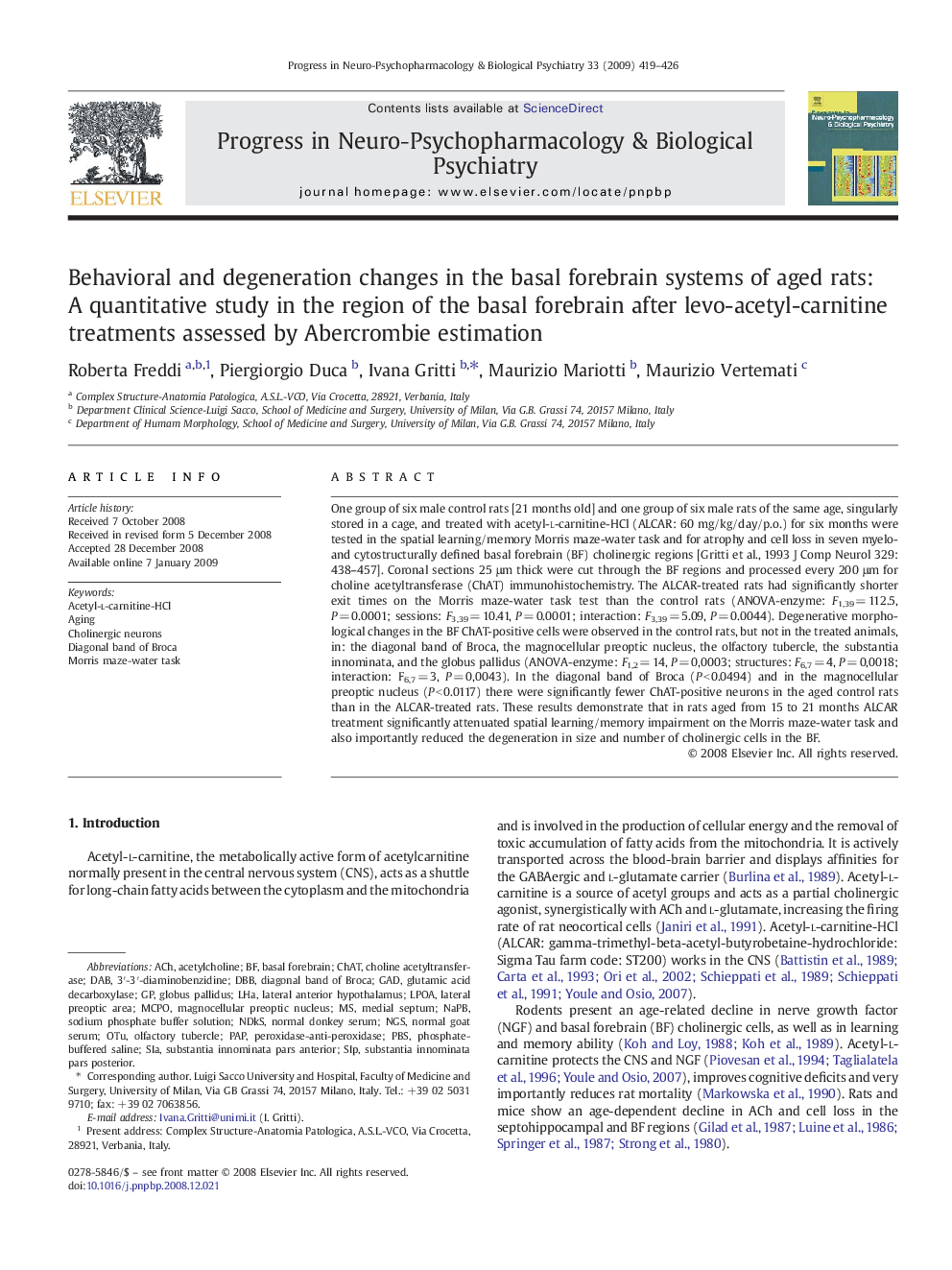| Article ID | Journal | Published Year | Pages | File Type |
|---|---|---|---|---|
| 2566195 | Progress in Neuro-Psychopharmacology and Biological Psychiatry | 2009 | 8 Pages |
One group of six male control rats [21 months old] and one group of six male rats of the same age, singularly stored in a cage, and treated with acetyl-l-carnitine-HCl (ALCAR: 60 mg/kg/day/p.o.) for six months were tested in the spatial learning/memory Morris maze-water task and for atrophy and cell loss in seven myelo- and cytostructurally defined basal forebrain (BF) cholinergic regions [Gritti et al., 1993 J Comp Neurol 329: 438–457]. Coronal sections 25 μm thick were cut through the BF regions and processed every 200 μm for choline acetyltransferase (ChAT) immunohistochemistry. The ALCAR-treated rats had significantly shorter exit times on the Morris maze-water task test than the control rats (ANOVA-enzyme: F1,39 = 112.5, P = 0.0001; sessions: F3,39 = 10.41, P = 0.0001; interaction: F3,39 = 5.09, P = 0.0044). Degenerative morphological changes in the BF ChAT-positive cells were observed in the control rats, but not in the treated animals, in: the diagonal band of Broca, the magnocellular preoptic nucleus, the olfactory tubercle, the substantia innominata, and the globus pallidus (ANOVA-enzyme: F1,2 = 14, P = 0,0003; structures: F6,7 = 4, P = 0,0018; interaction: F6,7 = 3, P = 0,0043). In the diagonal band of Broca (P < 0.0494) and in the magnocellular preoptic nucleus (P < 0.0117) there were significantly fewer ChAT-positive neurons in the aged control rats than in the ALCAR-treated rats. These results demonstrate that in rats aged from 15 to 21 months ALCAR treatment significantly attenuated spatial learning/memory impairment on the Morris maze-water task and also importantly reduced the degeneration in size and number of cholinergic cells in the BF.
